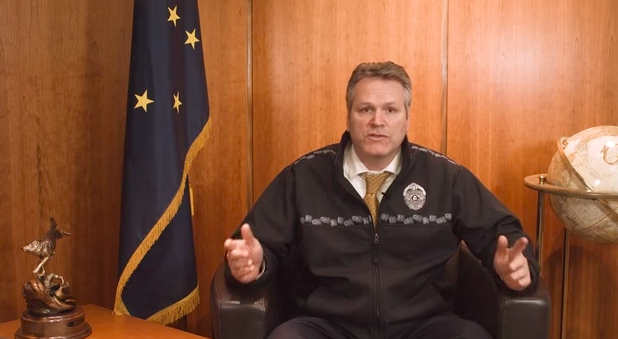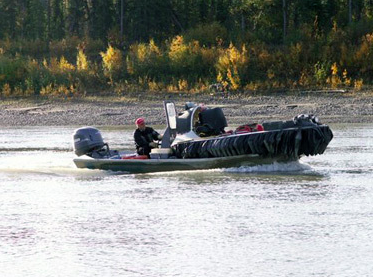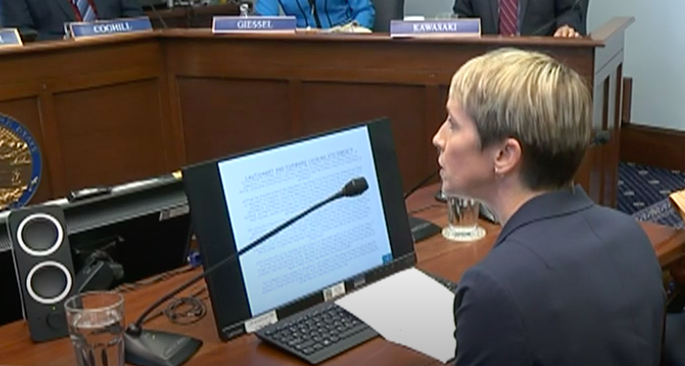DEADLINE APPROACHES SUNDAY
As of Wednesday morning, 515,850 people had filed for a 2019 Permanent Fund dividend — that’s roughly 70 percent of Alaska’s total population of 737,438.
Last year’s dividend — $1,600 — was paid in early October to about 640,000 Alaskans — women, men, and children.
The deadline for applications is 11:59 pm, Sunday, March 31. If you’re filing online, you’ll need to have received a confirmation number for your online application in order by then; the number is generated automatically as soon as you complete it and hit the submit button.

To file in person, Permanent Fund office locations in Fairbanks, Anchorage, and Juneau are open until 4 pm through Friday. They’ll be open Saturday in Anchorage and Fairbanks from 10-2 pm. In Juneau, the office will be closed on Saturday, but staff will accept applications in the large meeting room at the Mendenhall Public Library.
THE ENVELOPE, PLEASE
How much will qualified Alaskans receive this year?
That’s a political decision being debated by lawmakers and the governor. Gov. Michael Dunleavy ran his campaign on a few themes. Among them was returning to the original formula that was used to establish what Alaskans receive as their share of oil royalties. The formula was ignored by Gov. Bill Walker.
Twenty-five percent of all bonuses and royalties from oil development are required by statute to be deposited into the Alaska Permanent Fund.
Of that 25 percent, 50 percent of the realized earnings were historically issued to Alaskans as dividends in this “owner state.”
Walker set the amount for this year’s check at $1,800 in his proposed 2020 budget.
But then Dunleavy won office. By his calculation — the historic formula — it’s closer to $3,000.
The Alaska Legislature has 60 different ideas of what it should be, and may set it below $1,000 in order to hold government spending static.
It’s all up in the air, having been made a political decision, rather than a formula decision, by the Walker Administration. Every time a Finance subcommittee meets in the House of Representatives, the Permanent Fund dividend gets smaller, as lawmakers carve out more money for programs.
Dunleavy also has filed legislation to return to Alaskans the portion of their dividends that the state kept from them in 2016, 2017, and 2018.
According to the historic formula, eligible Alaskans should have received $3,678 additional dollars during those three years. The funds – $2.3 billion in money that didn’t go into Alaskans’ pockets – sits in the Earnings Reserve Account of the Permanent Fund.
The historic formula is. one thing. The Percent of Market Value of 5.25 percent draw is also the law. The two laws working together mean $2.9 billion is set aside — $1.9 for dividends and $1 billion for government.
Under Dunleavy’s plan, the people of Alaska would get it paid back to them over three years. Here’s how the Dunleavy Administration plans to pay it back:
2016:
Dividend Paid = $1,022
Historic Calculation = $2,083
Unpaid Dividend = $1,061
2017:
Dividend Paid = $1,100
Historic Calculation = $2,389
Unpaid Dividend = $1,289
2018:
Dividend Paid = $1,600
Historic Calculation = $2,928
Unpaid Dividend = $1,328
Total Unpaid Dividends for 2016, 2017, 2018 = $3,678
“As Alaska’s Governor, I believe the historic PFD program represents a share of our natural resource wealth. It allows every Alaskan to share in our natural resource wealth, which ultimately belongs to the people, and ensures that government is accountable to the people,” Dunleavy wrote in a letter to Alaskans that is posted on the Permanent Fund Division’s website.
“The PFD delivers a resource efficiently to the people, bypassing government agencies, and allowing each of us to decide how best to spend it. The PFD is equitable since it compensates everyone equally, even future generations, regardless of who’s in power or their political opinions,” he wrote.
Under Dunleavy’s payback plan, SB 23 and SB 24, Alaskans who received a dividend in 2016 and are eligible for this year’s dividend will get an extra $1,061 this year. If they received one in 2017 and are eligible for one next year, they’ll get another $1,289, and for those who received one in 2018 and are eligible in 2021, the amount is an additional $1,328.
The dividend reductions in 2016 and 2017 are in still in the Earnings Reserve Account. But the 2018 reduction of of the dividend has been spent on this year’s budget.
Whatever the amount is, it gets paid in October. Eligible Alaskans can apply here.







